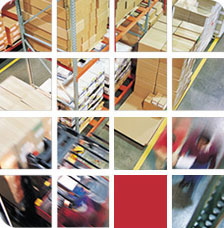It’s no secret that manufacturers and distributors are facing growing costs and complexity in their warehouse operations. Hyper-competitive global markets, accelerating business changes, and more demanding customers are creating intense pressure to increase warehouse performance. To remain competitive, protect profitability, and position themselves for growth, companies need to enhance their warehouse technology.
 To address the underlying problems of these warehouse challenges, best-in-class companies are adopting advanced warehouse management systems. These systems automate and extend the capabilities of their current systems to help them deliver the perfect order, reduce labor costs, strengthen compliance, and maximize the use of existing equipment and space. They include such capabilities as inventory management, work and task management, radio frequency and voice direction, labor management, slotting, and kitting and light assembly.
To address the underlying problems of these warehouse challenges, best-in-class companies are adopting advanced warehouse management systems. These systems automate and extend the capabilities of their current systems to help them deliver the perfect order, reduce labor costs, strengthen compliance, and maximize the use of existing equipment and space. They include such capabilities as inventory management, work and task management, radio frequency and voice direction, labor management, slotting, and kitting and light assembly.
Common limitations of warehouse operations contributing to higher costs are:
Ineffective order management—Customers today are more demanding than ever and want “the perfect order”: delivered complete, on time, accurate, and in perfect condition. Without clear visibility into exact product location, warehouse operations find themselves with excessive inventories or added staff such as expeditors, all eroding the bottom line.
Excessive labor costs—Growing complexities of customer and supply chain relationships result in companies struggling to manage change without adding staff because of an inability to track activities and labor costs that are rising because performance levels are slipping or best-in-class firms maintain lower costs.
Improperly managed compliance—Companies must be able to trace component inventories with extreme precision for optimum efficiency. They must comply with relevant codes or face penalties; follow corporate labeling mandates to avoid late fees; and ensure incoming components pass quality certification.
Inefficient asset use—Companies facing growing demands often purchase more equipment and warehouse space, instead of leveraging current assets. A key reason is lack of detailed inventory tracking capabilities, including lots and expiration dates, because they rely on ERP systems. Space optimization is another problem as workers fail to put products in appropriate bins or fail to follow FIFO/FEFO principles.
According to a survey by Supply Chain Digest, ERPs are not sufficiently robust to execute their planning functions. Logistics managers ranked best-of-breed warehouse management systems substantially higher than ERPs in functionality, expertise, and value. But working together, the ERP and the advanced warehouse management system offer the strongest capabilities.
Best-in-class companies using ERPs and advanced warehouse management systems are achieving high perfect order performance rates: 98% first-time order completeness, 98% on-time rates, and 99.7% order accuracy, according to Aberdeen Group.
Best-in-class companies are also managing the disruptions and uncertainty of supply and demand changes with less than 0.25% increases in labor costs, according to Aberdeen. With greater visibility, warehouse productivity, and market agility, top companies enhance profitability and gain the competitive advantage.